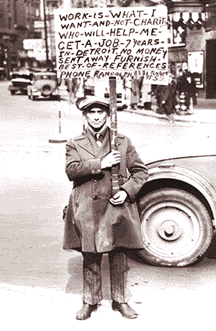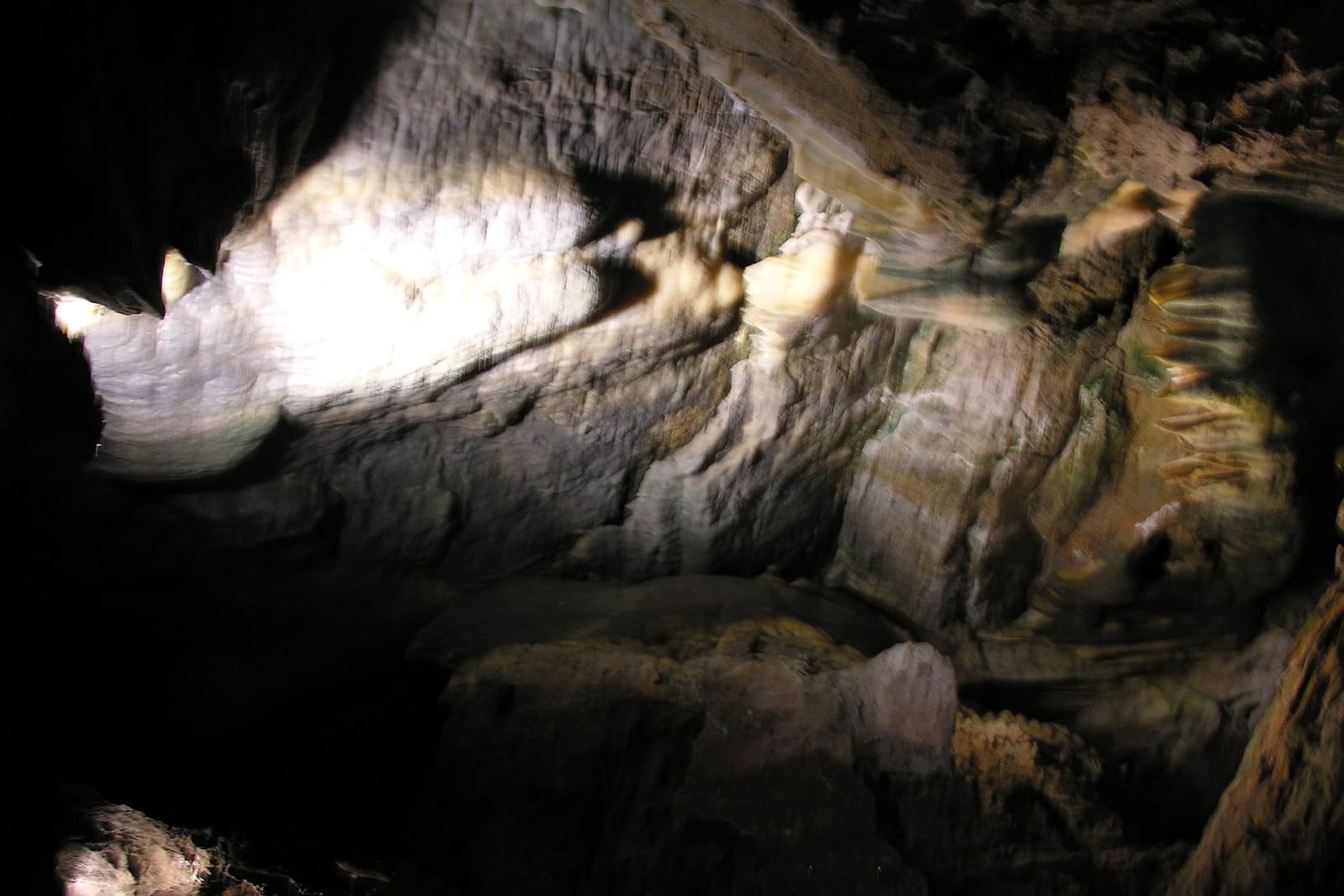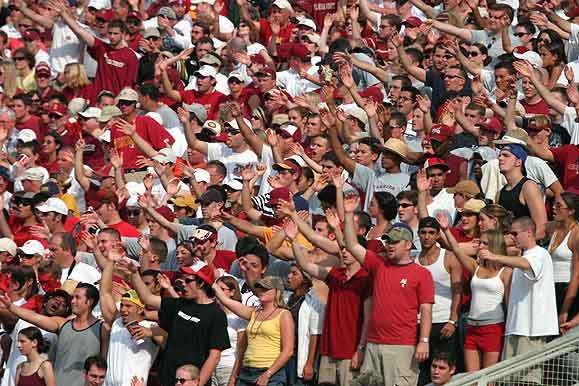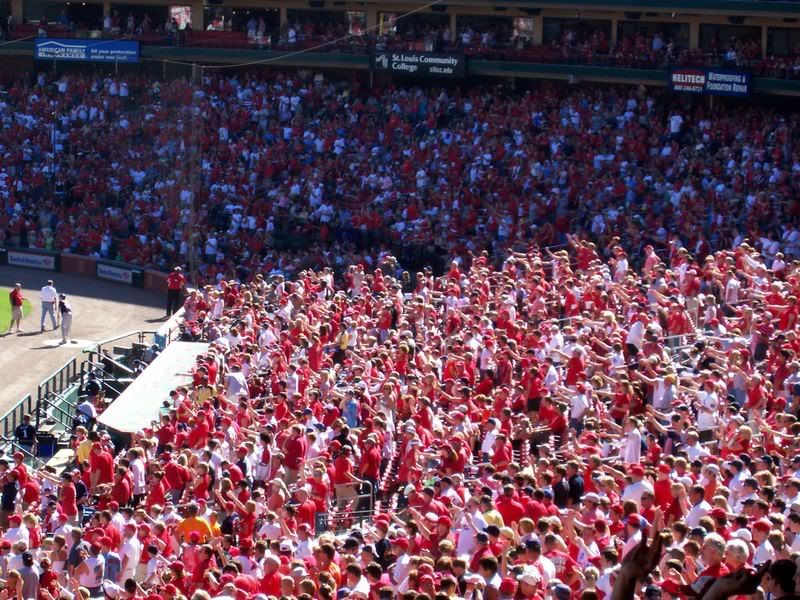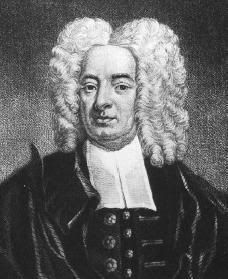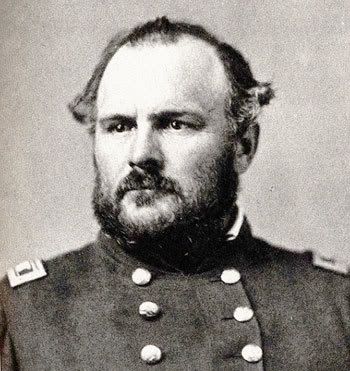[Crossposted from my Real History blog at Jeremy's invitation.]Most of the time I'm just writing about history. It's rare that I get to encounter it in person. But I did, last Tuesday, in Madison, Wisconsin. Allow me to set the stage first.
There are few things I love more in life than travel. I've been guarding a free airline ticket voucher for the last year, waiting for an event worthy of this most precious possession. I finally found one this week.
There are few politicians that have moved me more than Obama, and theirs names all end with Kennedy. I was thrilled when California moved its primary up, certain that I'd get a chance to see Obama in town. And I nearly did. A co-worker alerted me to a low-profile event he was holding at a technical college in downtown Los Angeles. But I couldn't get away, and really wanted to go to one of his huge crowd rallies in any case.
I saw Ted Kennedy speak in East Los Angeles. He was amazing. Full of fire and passion like I never thought I'd see in a politician. He reminded me of why the Kennedys have always moved me. They believe government can be a force for good, not merely a police force to be dreaded.
I got to see Caroline Kennedy and her cousin, Maria Shriver, at a huge event in Los Angeles. I even got to see Oprah, and Michelle Obama. I'm not complaining! But I really wanted to see Barack. His candidacy is historic on many levels, and I love words, and inspiring uses of them. I wanted to hear him speak.
The California campaign blew through in a matter of a few days, and was gone. Obama held no "Stand for Change" rally in Los Angeles. I was disappointed. I so wanted to hear him speak!
Meanwhile, my plane ticket beckoned. Use me to fly to Miami and then catch a cruise to the Western Caribbean, it teased. Visit a place you've never been to, like Austin. Let me take you to Assateague Island to see wild ponies swim the channel. Relax in the Hamptons and visit Wardenclyffe and Belmont Park. I had so many options. But my ticket's expiration date was fast approaching.
Then I saw Obama was going to speak in Madison, Wisconsin.
I knew one person in Madison, one guy who never fails to make time for me if I happen to be in his area. One guy who long ago broke my heart, but who has since become a kind and caring friend. This was the perfect stop. A chance to connect with both the past and the future while watching real history in the making.
I made my final decision Monday, February 11. At work. And my voucher was at home. And the flight I had to take to make this happen was leaving at 11:10 p.m. that night. The event was happening Tuesday night, February 12.
I sent my Wisconsin friend a note. "I might be in Madison tomorrow to see Obama. I'd love to see you if possible. Let me know."
I got home about 6:45 p.m. and called the airline.
Oh no!!
The voucher could only be used with 14 days advance notice! I was desperate. "Let me talk to your manager," I requested.
The manager got on and said sorry, there's nothing we can do. But I refused to give up. I begged, and pleaded. I told her this was a once in a lifetime opportunity and besides, I had gotten the free ticket because I had been bumped. "This is your big chance to make it up to me." It's now 7:00 p.m.
"Okay, I'm going to authorize your ticket," she said. "But here's the catch. How far are you from the airport?"
"I can be there in a half-hour," I said, shaving the truth by about 5 minutes.
"Good," she said, because you have to get there before the ticket counter closes at 7:30 p.m., or you won't be able to fly tonight.
Oh no #2!!
I hung up, bolted for my car, mentally planning my journey as I ran. Traffic on the freeway was too unpredictable. I had a way to get to the airport by side streets. But it would take a miracle to catch the lights just right and get to the airport before the ticket counter closed.
I pulled into the nearest parking lot at 7:27 p.m., jumped from the car and ran like I was in third grade, which, considering my physical shape, was a remarkable feat in itself. I thought I was going to have a heart attack at the ticket counter, my heart was pumping so hard. But I got the ticket.
Of course, then I had to drive home and pack, and turn around and make it back to the airport. But after the first mad dash, that was relatively easy. I checked my email. "You're crazy," my Wisconsin friend had written. "But that's why we all love you. Of course I'll find a way to see you," he replied.
Then the red-eye. Why is it that every time I take a red-eye flight, there's a screaming child in the seat behind me? What kind of karma is that? And haven't I paid for that karma by now? I got about an hour and a half of sleep, at most, before arriving in Chicago at 3 a.m. "No, it's 5 a.m., Chicago time," the stewardess corrected. "It's too painful to think of any other way."
While waiting to catch my connection, someone noticed my Obama shirt. Well, nearly everyone noticed my Obama shirt, but someone finally talked to me about it. "Are you going to the rally," he asked? I told him my story to that point. He was very impressed that I was coming from California to attend. He was a grad student at the school, and hoped to catch it later as well.
It was snowing on the tarmac in Chicago. We had to climb icy steps up into the little plane, and then wait for our wings to get de-iced before we left.
The Madison airport is so tiny after LAX and O'Hare. I was out the door about two minutes off the plane. I checked no bags. I didn't want to deal with the hassle. I had carried only a small duffel bag stuffed to bursting with clothes, and a large purse, overstuffed with a fleece jacket.
I caught a cab into town. It was snowing steadily. I love the snow, having lived most of my life in places that rarely had it. The cab driver was less enamored of it, explaining how they'd had three feet of snow twice before in recent weeks, with full melts between each onslaught.
The driver was eager to talk politics with me. He was supporting Hillary, but said he'd have no trouble supporting Obama if he got elected. He railed against the Bush administration, and all the harm they'd inflicted on this country.
He drove me through quaint, lovely, snow-blanketed Madison. I pointed at the lovely houses and he said so many people there were going through foreclosures, thanks to the mortgage crisis. It was heartbreaking.
I had been to Madison once before, during the Howard Dean campaign. One of our software vendors was in Madison, and I had to negotiate some difficult software changes for our Iowa office. My contact at the company had been a Dean supporter, so he had picked me up at the airport, drove me through a quick tour of the town, and put me up at his house during my brief stay there. So when my taxi passed by the capital building, I remembered it. If there's anything I enjoy more than traveling to someplace I've never been, it's returning there a second time and seeing some of the same sights, reinforcing the memories. And the Madison capitol building is a wonderfully memorable sight.
I had booked my hotel room while at LAX, waiting for my flight. I chose the Doubletree because it was two blocks from where Barack would be speaking. When I finally checked in, I was delighted by the warm chocolate chip cookie they handed me, but moreso by the view from my room: I could see the front of the venue from my window!
I wanted to nap, but didn't dare. I had no idea what time people would start lining up. I hadn't flown all the way from California to be off in some distant reach of the Kohl Center, the Basketball stadium at the University of Wisconsin, where Barack was to appear. Every ten minutes or so I'd look out the window. Nope. No line yet.
It was about 12 degrees. Fortunately, having lived in both Seattle and Vermont for periods of time, I had appropriate clothes. I layered up, put on my snow gloves, cap, long black wool coat and matching muffler, and headed over through the persistent snowfall to the venue. A lone CNN truck with a large satellite dish on top was parked along the side. But other than that, there was no indication that a big event would be happening there that day.
I called my friend. He was surprised I had wanted to come all this way to see Obama, and a little skeptical. "Are you sure he's speaking today? I haven't seen anything in the papers," he said.
I had a moment of panic. What if I had gotten the day wrong? What if it had been cancelled and no one told me? But CNN was there. "I'm sure," I lied. I went back to my hotel and got on the computer in the business center. Of course I was right. Phew! But if my friend hadn't heard, maybe no one else had either? What if they had this huge venue that seats 17,000 people, and only a few of us showed up?
I walked up to State Street. It appears all college students do in Madison is drink beer. They don't shop, and they don't eat much. Seriously, nearly ever business in every block was a bar!
I looked for a place to grab lunch, since my friend was too busy to get away from work on Tuesday. I found a cheese shop – yummm! One of life's little pleasures is cheese from Wisconsin. Cranberry White Cheddar. A five-year-old dark yellow cheddar I was told might be "too strong" for me, which of course made me want to try it. Both were delicious. I took a little slab of each to nibble on later.
When I got back to my hotel, and looked out, still, no line! I figured because it was snowing, no one wanted to be first. I know I didn't want to be. I wanted to be maybe third. Not first. I didn't want to be the one who started the line way too early. Although I might have, had it been clear where the line WOULD start.
By 3 p.m. I had to find out what was going on. More trucks had arrived, and I could see people walking past the front of the venue through the ever-constant snowfall, but still no line. I knew by now there must be people somewhere. I bundled up, knowing I would likely be outside in the steady snowfall for the next three hours (doors opened at 6). When I got to the venue, I realized why I saw no line. Signs on the doors that hadn't been there in the morning pointed people around to a side entrance. At the side entrance we were allowed into a side-area, a holding pen, with Disneyland-style wrapping rope lines. There were easily 200 people ahead of me already. But I knew I'd be close to the stage, one way or another.
I sat on the floor, as we all did, and started introducing myself and telling people the story of how I came there. Everyone though it was both wild and cool that I'd flown in from California.
While much of the audience was students, there were many adults there too. Everyone was talkative, friendly, and eager to share their enthusiasm. For many, it was the first political rally of any kind they had ever attended. "They're not usually this exciting," I warned them.
One student took a genuine liking to me. He'd arrived with a group of friends and his twin brother. He was undecided, and wanted to see if Obama could tip him in that direction. He and I talked at length. "You know so much," he kept saying. It comes with age and lots of reading, I didn't tell him.
I talked of the good and bad that I saw in Clinton. She's smart. She's full of energy. She's connected up the wazoo. But I talked of my misgivings. She's run a bad campaign. She hired people she had to fire.
When we got around to her vote on the war, he made the usual defense. Yeah, but it was probably a political vote. I don't think she really wanted to go to war. Neither do I, I said, and that's why I find her vote so horrible. If she knew it was wrong, and made it anyway, in the hopes of insulating her upcoming presidential from cries that she was "soft on terrorism," she was responsible for sending over 600,000 innocent people to their death to further her political ambitions. For that reason alone, I don't know how I could ever vote for her. "That's a really good argument," he said, unable to come up with a rebuttal.
I spent a lot of time talking to a woman who had brought her bright nine-year old son with her. He was incredibly well behaved, and immersed himself in the fantasy book he had brought. I talked of polls, and recent events in the campaign. "Where do you get this stuff?" she asked. I read a lot, I said. "I read a lot too, but you seem to know more." I pointed her to Real Clear Politics for great coverage of the important stories of the day, the latest polls, head-to-head matchups between Obama and McCain and Clinton and McCain, and more.
The time seemed to fly by because I was so enjoying talking to the numerous people around me. At 5 p.m., I asked the undecided student if he could get the Web on his cell phone. Yeah, why, he asked. Because Virginia's results are in, I said. The polls closed at 7pm. He looked up the news. "They're saying Obama won Virginia." Quickly the word passed through the crowd snaking through our holding area. "Obama's won Virginia." No one was surprised, just excited.
At 6 p.m., the event volunteers told us we'd have to go through security. I had just been through security at the airport, and was surprised how much tighter the security was at Obama's event. We had to pull anything metal out of our pockets and purses and present them to security. Anything electronic had to be turned on, even iPods and digital cameras. I had to untape a box of batteries for my camera to prove they were just batteries for my camera. I was happy to comply, because I wanted everyone in that building to be safe.
Security had a second benefit. It slowed the flow of people into the stadium. I stayed with the woman and her son who I had talked to. We flirted with the idea of standing right in front of Obama's podium, but it was only 6 p.m., and he was not going to appear until around 9 p.m., so we opted instead to be seated behind the podium in the area that was shown on camera. We were in the first row of bleachers behind the stage, with a clear view, since the security people were keeping the area between the podium and our seats largely clear.
It was just wild seeing a place that big fill from near empty to overflowing. And the crowd knew how to have fun. Early on, the woman next to me pointed out people were standing and putting their arms together to make a big "O" shape and yelling "oh" as they did it. "I want to do that," she said.
A live band was playing. At one point, a bagpiper joined them, which the crowd cheered loudly. Periodically, they'd turn on the sound on the Jumbotron, a huge TV display hanging from the top of the stadium, so we could hear election commentary by Wolf Blitzer on CNN. When the Virginia results were displayed at the top of the hour, a big cheer went up in the stadium. But where was Maryland? Due to bad weather, the Maryland results would come in much later.
I talked to my seat neighbors about this being a tipping point night. I really felt that, once Obama swept the Potomac primaries, as I fully expected him to do, there'd be no going back. He truly would have momentum, and no matter what happened, Clinton was never going to quite regain the lead again. I hope I'm correct.
The crowd acted more like they were at a sporting event than a political rally. They started doing the wave, first at normal speed, then in slow motion. It was beautiful watching that – a big, undulating forest of people, like arms of sea anemones moving with the tide. On the third lap, the wave went double speed, with people flapping up and down in their seats so fast the wave flashed around the building in a hot few seconds. Is this a Wisconsin thing, or do people do that everywhere? I'd never seen a three-speed wave before!
At one point people got up and put their arms in the O shape and then just said and held the note "oooooohhhhhhhhhh." For the first time I realized why some in the media are saying the Obama movement has become cultish. It's easy to see that as disturbing, from a distance. But up close, it's just a crowd having fun. Personally, I haven't met anyone who acted like a cult member in any way, and I didn't see anyone treating this in any way as a religious event. Nearly everyone knew something specific about Obama and wasn't just on board because of a speech. Most people, however, were originally inspired because of his speech at the Democratic Convention in 2004.
I'm always happy to tell people I knew of Obama before that speech, thanks to my work on the Dean campaign. Howard Dean's campaign was raising so much money so easily they decided to raise some for people who really fit the Dean mold, who were opposing the war in Iraq strongly, and one of those people was Barack Obama, then running for his U.S. Senate seat. I was impressed by him, and we gave money to him. I was thrilled later to see him at the 2004 convention.
As much as I was amazed and enthralled with his keynote speech, I was one of those who originally winced when I heard Obama was running for President. Too soon, I thought. He's too young. Too inexperienced. And Clinton has this all locked up anyway.
When the race started, it was clear that only Edwards, Clinton, and Obama would have a shot, and I was happy with any of them over anyone the Republicans were fielding, so I really didn't plan to get involved. But when people started saying Obama had no record, I thought well, wait a minute. He's had more years in elected office than Hillary Clinton. Of course he had a record. If no one else was going to dig it out, I would.
I started reading everything I could find on him, especially anything relating to his years in the Illinois state legislature. The more I read, the more I liked what I saw. He'd passed some difficult but important legislation in his state, even when the Republicans controlled the legislature. He was respected on both sides of the aisle. But I had no idea in December that my reading would lead me to snow-covered Madison two days before Valentine's Day, clapping and chanting, waiting for the man of the hour to appear.
By the time the event started, not only were all the seats full, but all the standing gallery areas filled as well. An overflow area was set up for those who couldn't get into the stadium.
Volunteers passed signs to all of us. The people around me were very happy about that, as it's nearly impossible to get signs from the campaign, so backlogged are they with orders. (But try ObamaCycle if you have an upcoming caucus or primary – people in other states have signs and other items they'll share.)
The pre-speeches were mercifully short. Often, at political rallies, you have to listen to anywhere from 3 to 10 speakers before the main one, as people at increasing levels in the party try to get in on the action. Some of them go on and on. That didn't happen.
One young guy spoke first, another followed (I think – so much of it is a blur in memory now), and then there was nearly an hour gap during which pop-rock music blared. And the crowd sporadically chanted "Fired up" and "Ready to go." We watched that "Yes, we can" black and white video on the Jumbotron.
The last speaker before Obama was Wisconsin Governor Jim Doyle, who had just endorsed Obama. He wasn't much of an orator. He had been to many events, but this was by far his favorite. Yeah, I thought. You've never had a chance to speak to an audience this size before! All politicians are part actor, and any actor feels a thrill stepping out in front of such a huge crowd. Doyle told us Obama had just won Maryland and the crowd went wild!
And finally, the main event. Barack Obama! The crowd thumped their feet and cheered to wake the dead. Cameras and boom mikes were the best indicator of where the candidate was as he cruised the crowd.
It took a while for Barack to get to the stage. He was surrounded by heavy security. The music was pounding. People ran to the walkway area to try to shake his hand. One girl succeeded and ran back our way, literally jumping with joy.
Finally, he reached the podium. I mostly saw his back, although I could see his profile as he turned from side to side, following his speech via two teleprompters, clear plastic panels you can only read from if you're at a near distance. I could, of course, see his face on the Jumbotron.
I only half heard the speech. So much of it I had heard several times before, but I tuned in to anything new. I was trying to get his picture. I was listening to the people near me, to hear them sniff or catch their breath. I cheered with the rest and offered "yes, we can" where appropriate. I stood and sat as the spirit moved me. But what I heard proved a point I had long suspected: as good as he is on television, he's that much better in person. There's a fire and intensity in his delivery that doesn't always come through the camera. If you ever get a chance to hear the man speak, you should. No matter whom you support. He's just that good.
Here's his speech, in three parts:
It ended all too soon. He had a rousing finish, but I wanted it go on a little longer. I ran to the rail area to try to shake his hand on his way out. He shook a lot of hands for many minutes after, but I couldn't get any closer to him than about six feet.
When I got out of the venue, I saw a sign with huge, narrow, red letters spelling out "YES WE CAN" propped up in a snowbank. I saw a line of about 10 media trucks with satellite dishes all lined up in a row, with their dishes raised and pointing in the same direction.
But it was what I didn't see anymore that made the night seem a little miraculous. It had finally stopped snowing, the clouds were gone, and the stars were sparkling.
I went back to my hotel, tired, happy, and eager to see the TV coverage for the night. I went into a back part of the hotel restaurant, where CNN was playing, and where a lone waiter, a young guy, sat folding 'setups' – tucking silverware into napkins, for the following day. He offered to help me get some food since the kitchen was closing in one minute. He started talking to me about politics, his views, his own dreams, his life in Scotland for a couple of years, losing out on a Pell grant thanks to a change instituted by George W. Bush. He'd wanted to attend the rally, but had to work. He kept apologizing, saying he knew I wanted to watch the TV. But he was very bright, and very engaging, and I usually prefer interacting with humans to watching TV, even on such a big night. So I talked to him until he was finished and had to leave. I then returned to my room and watched CNN and MSNBC into the wee hours.
The next morning, I got a text message from my friend. "Are you on CA time or WI time"? "I'm up in any case. Call me." I responded. He offered to take me to lunch, and then drop me at the airport. What a nice guy. That saved me about $30 in cab fair right there. And of course, he took me to the place Obama had stopped at the night before, a popular bar/grill in a renovated warehouse building. A lot of old factory buildings are being turned into office complexes or restaurants and bars.
It never snowed again. From the moment I emerged from the Obama event, it was as if something had turned for the better. It was bright and clear all day. Both flights went by without a hitch. I had great seatmates on each flight. One of them even gave me a book she had just finished reading.
At work the next day, I was a hero. Three different people told me how much they admired my passion, and wished they felt so strongly about something.
I don't see it as passion. That's just me, doing what I love, and making the most of every minute, whenever possible. We can all do it. It doesn't take much. It just takes being alert, and seizing moments when you can.
Now it's your turn. Seize this moment. If I have inspired you in the slightest, do something to make the world a better place. Donate to the Obama campaign (use my page! Show me some love!) Sign up at http://www.barackobama.com/ and make a few phone calls to Wisconsin, or Hawaii, or Texas, or Ohio. They give you a script. You can do it from home. It's so easy. It's so needed.
Thanks for reading, and for caring. I treasure your interest in real history. When I started down this rabbit hole, it was in part because I saw the pendulum of political will swinging perilously close to fascism. For the first time in my life, I have hope that the pendulum is starting to swing in the opposite direction. And I owe that hope to Barack Obama.
Labels: Lisa Pease








